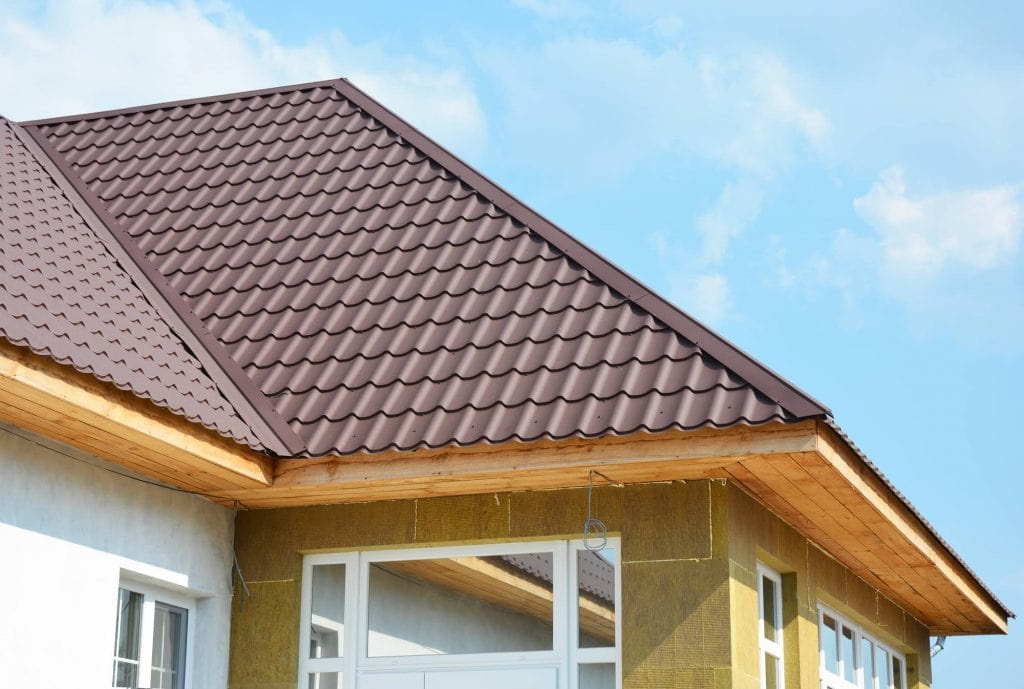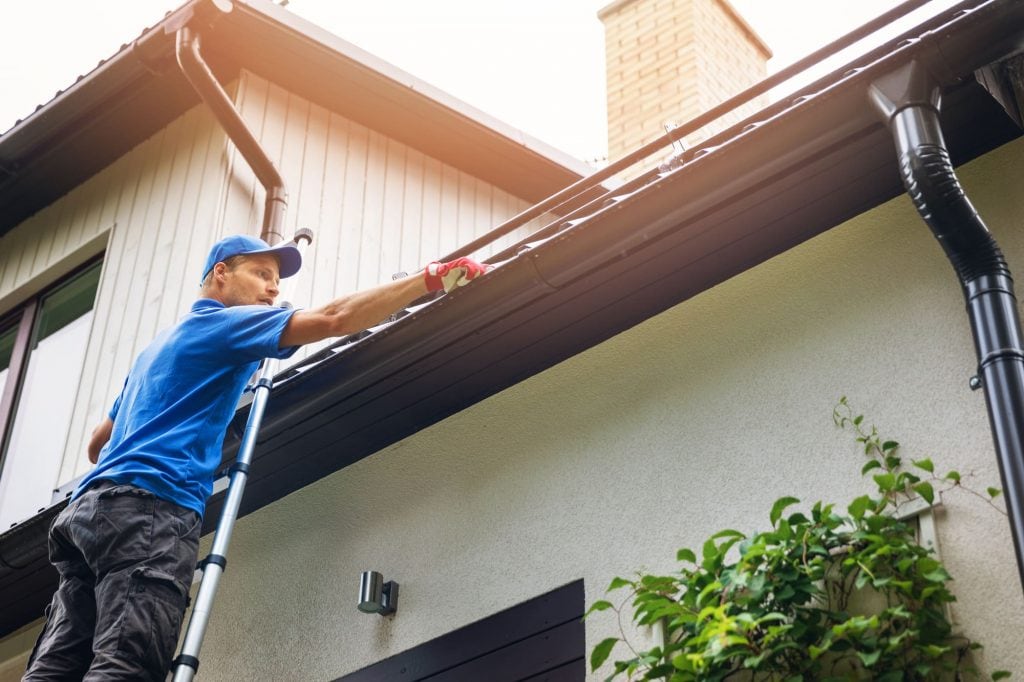When it comes to home design and architectural elements, many may overlook the role of the eaves. Yet these structures play a vital part in aesthetic appeal and practical function, adding character to homes while protecting them from the elements.
If you’re interested in learning more about eaves or are searching for your ideal home, understanding this exterior design element can greatly inform your decisions.
What Are Eaves?
Eaves are the edges of the roof that overhang the exterior walls of a house, extending beyond the structure’s footprint. They’re an integral component of the roofing system, connecting the roof edge and the outer walls.
Function of Eaves

Eaves serve several crucial functions, which can be categorized into protective and aesthetic purposes. One of their primary roles is to shield the building from water damage, particularly around the foundation and external walls. By extending beyond the house’s exterior walls, they direct rainwater away from the structure, thereby preventing extensive water damage.
Eaves also provide excellent protection against hot weather and extreme weather conditions. During summer, the eaves overhang helps shade the windows and walls, keeping the house cool and reducing energy bills. During inclement weather, eaves offer extra protection against wind-driven rain or snow.
Finally, eaves contribute to proper ventilation, especially in the attic space. Soffit vents installed in the eaves allow air circulation, reducing the risk of dampness in the roof space, prolonging the life of roofing materials, and improving energy efficiency.
Components of Eaves
Eaves, or roof overhangs, are made up of several roof components. The most visible parts are the fascia board and the soffit.
The fascia board is a long, straight board that runs along the roof’s lower edge, fixed to the roof rafters. It provides a point of attachment for gutters and gives the eaves a neat, clean appearance. Fascia boards can be made from various materials, including wood fascia, vinyl fascia, or fiber cement board.
The soffit is the underside of the eave, bridging the gap between the outer wall and the edge of the roof. Soffit boards can be vented for better air circulation in the attic, adding to the house’s aesthetic appeal.
Styles of Eaves
There are several basic types of eaves, each with its unique architectural style.
- Open eaves have visible rafters or rafter tails along the roof edge. This style is often seen in traditional or rustic designs and can offer an attractive, classic look.
- Closed eaves, or boxed-in eaves, have the rafters covered with soffit boards, providing a smooth, finished appearance. This style is more prevalent in modern, contemporary designs.
- Exposed rafter eaves reveal the ends of the rafters or roof beams. They are commonly used in specific architectural styles, such as Craftsman, and are loved for their rustic charm.
- Box eaves are similar to closed eaves, but the rafters are boxed in to create a more extensive overhang. They’re often seen in ranch-style homes and mid-century modern architecture.
Benefits of Eaves
Eaves are not only an essential architectural element but also offer numerous benefits that contribute to a house’s durability, energy efficiency, and visual appeal.

Protection From the Elements
One of the primary advantages of eaves is their ability to shield the house from the elements. By preventing rainwater from directly hitting the walls and foundation, eaves safeguard the building from water damage. The overhang also ensures that water doesn’t pool around the foundation, reducing the risk of leaks and structural damage.
Furthermore, eaves provide a barrier against the harsh summer sun, reducing direct sun exposure on windows and walls. This shade effect can help keep the house cool, making the indoors more comfortable during hot weather.
Also, eaves can prevent snow and ice accumulation near the house’s walls. By directing snowfall away from the building, eaves reduce potential damage and maintenance work associated with thawing and freezing cycles in colder climates.
Enhanced Energy Efficiency
Eaves can significantly contribute to a home’s energy efficiency. By providing shade and blocking heat transfer between the interior and exterior, they can reduce the cooling needs of the house during hot seasons. This thermal protection can lead to substantial savings on energy bills, particularly in areas with hot, sunny climates such as Florida, Alabama, Hawaii, or Texas.
Preservation of Exterior Surfaces
Eaves play a vital role in preserving the house’s exterior surfaces. By shielding the walls from rain and direct sunlight, they help prevent water damage, rot, and mold, thus prolonging the lifespan of the outer walls.
Doors, windows, and other elements exposed to outdoor elements also benefit from the protection offered by eaves. By reducing direct weather exposure, eaves help maintain these elements’ aesthetic and structural integrity.
Design and Aesthetics
Beyond their practical functions, eaves can greatly enhance the overall appearance of different architectural styles. From the deep, wide eaves of Asian pagodas to the distinctive eave brackets of Victorian homes, this architectural element can define the character of a building.
Eaves can be adorned with decorative elements like corbels, brackets, or ornamental molding to enhance visual interest and curb appeal. Moreover, the choice of finishing material, whether it’s wood, fiber cement, or vinyl, can also influence the aesthetic appeal of the eaves.
In addition to aesthetics, eaves can also serve other benefits, such as providing a location for security cameras, outdoor lighting, or even a home for decoy nests to discourage pests. With their combination of functionality and visual appeal, it’s clear that eaves are an essential component of any house design.
Maintenance and Considerations
While eaves offer numerous benefits, they also require regular maintenance and attention to ensure their proper functioning and longevity. Here are some key aspects homeowners should consider:
Regular Inspection
Regular inspection of eaves is crucial to detect any damage or signs of wear and tear early. This includes checking for cracks, rot, peeling paint, or signs of pests. Watch for damage to eaves from extreme weather conditions such as high winds or heavy snowfall. Inspection can help catch problems early, saving you from more extensive damage and costly repairs later.
Gutter Maintenance

Eaves often incorporate gutters, which are crucial in directing water away from the house. Keeping these gutters clean is essential to ensure proper water flow and prevent damage to the eaves and other components of the house.
Accumulated debris in the gutters can cause water to overflow and damage the soffit boards or fascia. Regularly clearing out leaves, twigs, and other debris can keep your gutters functioning optimally.
Professional Assistance
While homeowners can do some minor maintenance tasks, seeking professional help for eave repairs or modifications is advisable. Eave work can be dangerous due to the heights involved, and professionals have the necessary safety equipment and expertise to handle the job properly. In addition, professional contractors can ensure that any repairs or alterations comply with local building codes and regulations.
Other considerations include the aesthetic appeal of your eaves, the materials used, and the impact of weather and environmental conditions. By caring for your eaves, you can ensure they continue to protect and enhance your home for many years.
Key Takeaways
Eaves play an integral role in a house’s functionality and aesthetics. These roof extensions protect the house from elements like rain, snow, and sun, reducing potential water damage to the walls and foundation.
They also enhance energy efficiency by shading the house, leading to cooler interiors during hot weather. Beyond these practical functions, eaves contribute to a house’s architectural style and curb appeal, adding to its overall aesthetic attractiveness.
In summary, eaves are not just an architectural element; they serve essential protective and decorative purposes. Their presence reflects thoughtful design, consideration for comfort, and a practical approach to home maintenance. Just as the eaves protect the house, they, too, require regular inspection and maintenance.
Ready to find your perfect home with well-maintained eaves? Visit eXp Realty to do custom home searches and sign up to get alerts of new property listings. For expert advice and assistance, don’t hesitate to contact a local eXp agent.
FAQs: Eaves
Here are some common questions people ask about eaves:
What are eaves in a house?
Eaves are the edges of the roof that overhang the face of a wall and project beyond the side of a building. They provide protection, shielding the walls, windows, and foundation from rain and sun.
Is a soffit and eaves the same thing?
No, a soffit is part of the eave structure. It is the underside component of the eave, connecting the roof’s overhang and the side of the building.
What is the difference between an eave and an overhang?
An eave refers to the entire horizontal edge of the roof that overhangs the walls. An overhang specifically denotes the roof portion extending beyond the walls.
Are eaves and gutters the same thing?
No, eaves and gutters are not the same. Eaves are the edges of the roof that extend beyond the walls, while gutters are channels installed along the eaves to direct rainwater away from the building.
Are eaves and fascia the same?
No, eaves and fascia are not the same. Eaves are the roof edges that extend beyond the walls, while fascia is a board attached to the ends of the rafters at the eaves, where the gutter is often placed.
What are the three types of eaves?
The three main types of eaves are open, closed, and boxed or boxed-in. Each type has its own distinct features and fits different architectural styles.
Are eaves connected to the attic?
Yes, eaves can be connected to the attic through soffit vents. These vents allow air circulation between the attic and the exterior, improving attic ventilation and energy efficiency.
Does every roof have eaves?
Most traditional house designs include eaves, but some contemporary designs or certain architectural styles may need them. The choice to include eaves often depends on factors such as architectural design, climate, and personal preference.





